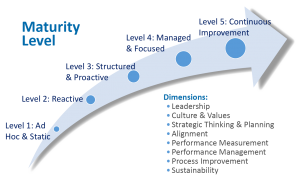Strategic planning is the primary step in the process of strategic management [Strategic management is a comprehensive topic that covers almost all the functional aspects of the organization] which can be outlined from at least two perspectives:
First, strategy is the “broad programme for defining and achieving the objectives of an organization and implementing its mission”.
Secondly, “It is the pattern of the organization’s response to the external environment over a period of time”. A strategy that takes a broad and typically long range focus is called strategic planning.

Watch this Video to Understand the Overview of Strategic Planning Process
Strategic planning takes into account the extended time horizon. There may not be any immediate impact out of strategic planning, but the consequences in the long-run prove to be gradual and significant as well.
It provides with the necessary action plans to make a difference in vital areas concerning development. You can always associate innovativeness with strategy since it explores new paradigms and tries to enhance the impact.
When the size of organizations expands, they are broken down into strategic business units (SBU’S) for the purpose of functional excellence. These units are expected to operate as if they were relatively independent businesses.
WHY STRATEGIC LEADERSHIP IS IMPORTANT
A tailor made approach is essential when it comes to strategy development the systematic analysis of the factors associated with customers and competitors (the external environment) helps the organization to meet the challenges of modern society.
More and more organizations are focusing on formal approaches and concepts for planning their long range process.
Specifically these challenges are a result of increasing rate of change, the complexity of manager’s jobs, the increasing importance of fitting the organization into external environment, and the increasing lag between the preparation of plans and their implementation in future.
Strategic planning is an organization’s process of defining its strategy or course, and making decisions on resource allocations to pursue this strategy.
Managers must be adequately geared up for strategic planning. The goals of the organization must be made plain and not unclear.
Each business unit should be categorized based on its performance level to decide on the resource share to be allocated.
You need to infuse cash flow into ineffectual units and divest funds from dying units into other profitable ones. The ultimate aim is to build up star performers that will be the perennial source of income or revenue generation.
There should be a strong linkage between planning and control. The assessment of strategic plans of the business units must be made periodically and effectively.
TOP FIVE REASONS WHY STRATEGIC PLANS FAIL
SWOT analysis is a strategic planning technique used to evaluate the Strengths, Weaknesses/Limitations, Opportunities, and Threats.
Planning is the primary step for control as it provides several standards and benchmarks of control. Planning extracts commitment.
Some times planning highlights the objectives only and the planning premises may not be fully reliable. Threats are to be considered as challenges and must be converted into opportunities.
Two heads are better than one is the philosophy of brain storming where a group of people with knowledge and expertise assemble to lay out clear plans that will steer the organization smoothly even in times of rough weather.